Polygala myrtifolia is a common, widespread pioneer shrub with pretty mauve flowers on and off throughout the year with a peak in spring, hence the names Augustusbossie and September bush.
The buds are green, flat, marked with dark veins and oval to half-moon-shaped. The lower buds open first. The flowers are carried in small clusters at the ends of short branches and look a bit like legume (pea or bean) flowers, but are actually quite different. Close inspection will reveal that although they have two wings and a keel, they lack the banner (also called standard) petal. All polygalas also have a showy, and very distinctive brush-like tuft on the keel. The showy petals, beautifully marked with darker veins, are usually in shades of mauve or purple, but can also be pink scarlet, or white. Polygala myrtifolia has blooms throughout the year with a peak in spring ( August to October) when the plants flower profusely. The fruit is a small.
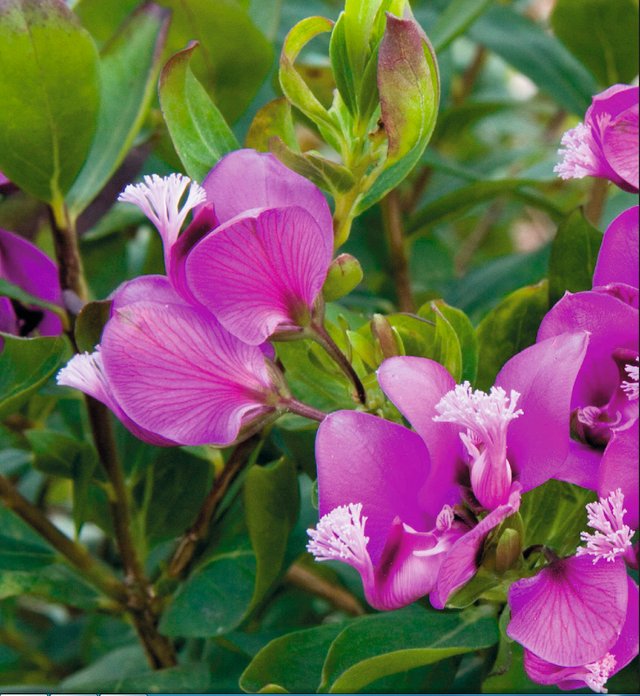
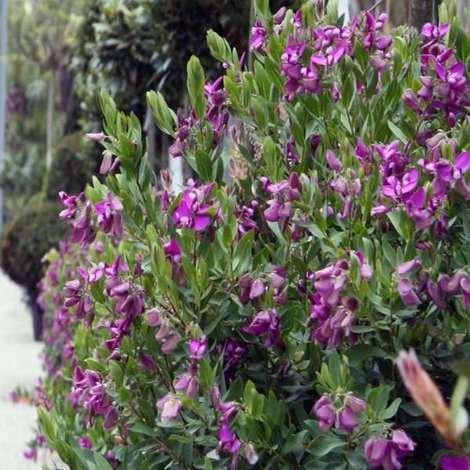
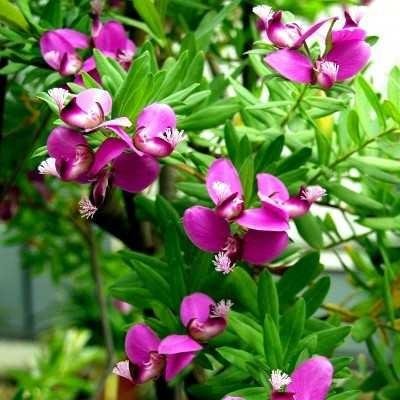
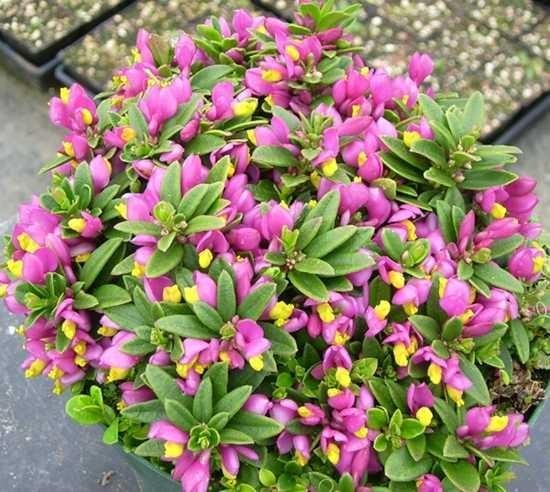
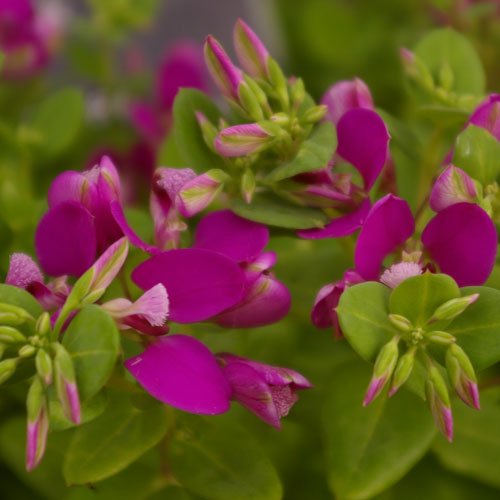
Polygala myrtifolia varies in form as it changes to adapt to the different areas it grows in, from the harshness of the coast to the drier inland climates. An evergreen shrub, the most common forms reach about 0.6 to 1.8 m in height with a few upright-growing stems and slender branches densely covered with leaves that resemble myrtle. The oval-shaped leaves are usually 25-50 mm long and up to 13 mm wide. The leaves are light green, dark green or slightly grey. Some forms of P. myrtifolia have thin, needle-like leaves. It can also grow into a small tree reaching almost 4 m high.
Derivation of name and historical aspects
Polygala is an old Greek name from the words polys meaning much and gala meaning milk, the name given to this genus for some of its members which have the reputation for promoting the secretion of milk. The species name myrtifolia means myrtle-like leaves.
The milkwort family (Polygalaceae) occurs nearly world-wide with 17 genera and 950 species. Of the 400-450 African species, 32 occur in the Cape region. The genus Poygala consists of about 600 species with 232 species in Africa and Madagascar of which approximately 88 species occur in southern Africa. Other local species grown in gardens include Polygala fruticosa and Polygala virgata.
Source:
magoo-2 found a series of multi accounts of a same owner is following your articles to cheat your generous rewards.
magoo-2 found these accounts are suspicious & can be multi accounts of a single owner. Conclusion is based on last 30 days transactions:
@rupok
@sarahmcdowell2
@razu788
@tangera
magoo-2
Check our latest multi comment spam update report